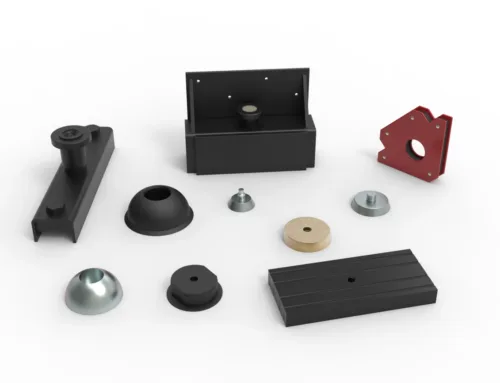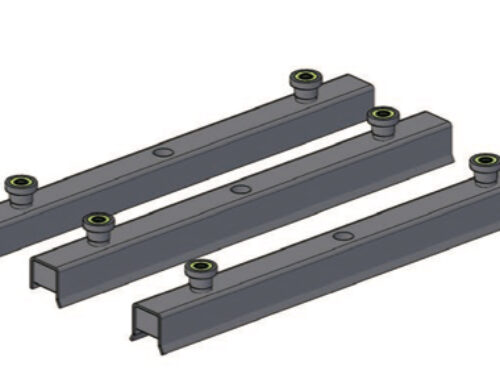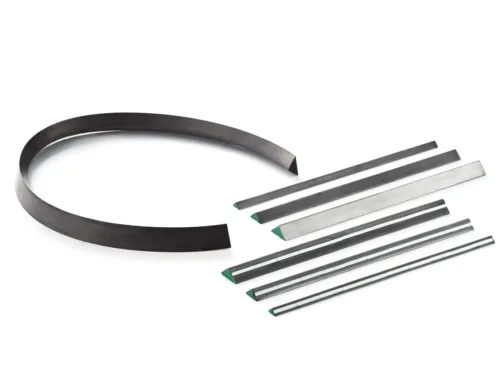Magnets, whether they’re used in industrial applications or in products you have around the house, create a magnetic field that can be more or less strong. Knowing how to measure this strength is important, especially when you use magnets in applications where reliability and performance are critical. In this guide, we’re going to talk about how to measure the strength of a magnet, the different units you can use, and ways you can do that with accuracy.
Types of Magnets: Permanent vs. Electromagnets
Before we get into how to measure a magnet’s strength, we need to talk about the two types of magnets: permanent magnets and electromagnets.
Permanent magnets stay magnetized forever after they’ve been magnetized.
Electromagnets only create a magnetic field when you put electricity to them. When you take the electricity away, they stop.
Units for Measuring Magnetic Strength
You can measure magnetic strength using different units. Here are the most common units you’ll see:
- Tesla (T): The tesla is the standard unit for measuring the density of a magnetic field, or its residual flux density. It can be expressed in several ways using other scientific units, such as
- Gauss (G): Gauss measures remanence, the magnetism retained in a material after an external magnetic field is removed. One gauss equals 10^-4 teslas and is commonly used in commercial applications to express the magnetic field strength.
- Oersted (Oe): This unit measures a magnet’s coercivity, or its resistance to demagnetization. Coercivity is the force required to reduce a magnet’s magnetism to zero. One oersted is defined as 1 dyne per maxwell or approximately 79.577 amperes per meter.
- Kilogram (kg): In magnetism, kilograms are used to measure a magnet’s pull strength, or the amount of weight a magnet can hold before it detaches from a surface. Pull strength is typically expressed in kilograms or pounds.
Methods of Measuring Magnet Strength
- Magnetometer/Gaussmeter
A magnetometer is an instrument that measures the strength of a magnetic field at a specific point in space. You’ll find two main types of magnetometers:
Scalar Magnetometers: These devices measure the scalar value of the magnetic field’s intensity. Examples include proton precession magnetometers and Overhauser magnetometers.
Vector Magnetometers: These instruments measure both the magnitude and direction of a magnetic field. Examples include superconducting quantum interference devices (SQUIDs), search-coil magnetometers, and Hall-effect magnetometers.
Magnetometers work in different ways. For example, Hall-effect magnetometers detect a magnetic field by seeing how the field affects the flow of current. Magneto-induction magnetometers measure how a material becomes magnetized when you put it in a magnetic field.
- Fluxmeter
A fluxmeter measures magnetic flux, which is the total amount of the magnetic field that’s passing through a given area. It’s particularly useful in applications where you need to understand how much magnetic energy is flowing through a specific space. Fluxmeters rely on Faraday’s law of electromagnetic induction, which says a changing magnetic field will induce a voltage in a conductor. The fluxmeter measures those voltage changes and calculates the magnetic flux.
- Magnetic Pull Tests
Magnetic pull tests measure how strong a magnet is by finding out how much force it takes to pull it off a piece of metal. You use these tests to check the quality of a magnet and make sure it has the strength you need for your application. To do a magnetic pull test, you attach a piece of metal to a hook and then pull it away from the magnet at a 90-degree angle until the magnet lets go. The amount of force it takes to make the magnet let go is your pull strength in kilograms or pounds.
Factors That Affect Magnetic Strength Measurements
The accuracy of your magnet strength measurements can be affected by a few environmental factors. Here are a couple of examples:
- Temperature: High temperatures can make a magnet weaker, especially if the temperature goes above the magnet’s maximum operating temperature. Cold temperatures can make a magnet stronger because the cold slows down the motion of the magnetic particles.
- Humidity and Electricity: Moisture and electricity can also affect the strength of your magnet. For example, some rare earth magnets, like neodymium magnets, can corrode, which makes them weaker.
Choosing the Right Magnet for Your Application
When you’re looking for a magnet for your application, you need to consider both the strength and the material properties. Different types of magnets have different levels of strength and thermal stability.
- Flexible Ferrite Magnets: These magnets are cheap and good for general applications like labeling and printing. They’re not as strong, but they’re flexible, so they’re great for thin, bendable applications.
- Samarium Cobalt and Neodymium Magnets: These magnets are way stronger and can handle higher temperatures. They’re used in aerospace, automotive, and medical applications.
- Alnico Magnets: These magnets are super strong but have less resistance to being demagnetized. You’ll use them in applications where you need a stable magnetic field over a wide temperature range.
Measuring the strength of a magnet is important to make sure it works well in whatever application you’re using. You measure magnet strength using different units like teslas, gauss, oersteds, and kilograms, depending on what you need to know. Magnetometers, fluxmeters, and pull tests are tools you can use to measure magnet strength, direction, and pull force. By knowing these things, you can pick the right magnet for your needs and make sure it works well for a long time in whatever you’re doing.
For more information on magnetic products and solutions, NBAEM magnets offer a variety of high-performance magnets for different industries.





[…] Magnetic flux: It is to put the magnet into a Helmholtz coil and then take it out. The principle is that there is a constant magnetic field in the coil. When you put the magnet in and then take it out, the magnetic field will change. It has an impact. The change between the magnetic field of the magnet and the original magnetic field can be used to determine the magnetic energy density of the magnet itself, so it is a relative value. It refers to the data energy of the entire magnet, not the data at this point, so most of the time, we have to combine the two data of magnetic flux and surface magnetism to analyze at the same time, one is the relative value and the other is the absolute value. […]